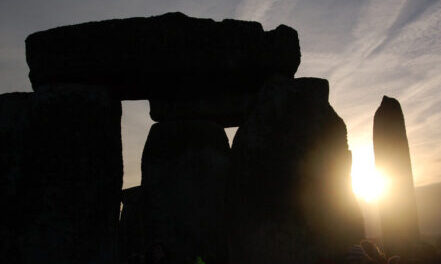
Winter Solstice – Yule
The Winter Solstice takes place on or adjacent to 21st December and is the day with the longest period of darkness ~ approximately 16 hours 10 minutes. Modern-day Druids gather at Stonehenge and other ancient sites to witness the rays of the sunrise and sunset align with the monoliths and to echo our ancestors’ grateful thanks for this sign of the continuing solar cycle.
Its observance has greatly diminished today, but when the country was focused on hunting or animal husbandry and home-grown crops for food, people were much more conscious of the sun’s essential role. The belief was that the sun actually stood still for twelve days, hence the Latin ‘sol’ (sun) put with ‘sistere’ (to halt) to form the word’s root.
Some of the old customs included burning a ‘Yule‘ log brought from the forest for each of those twelve days to encourage the sun to move on, and adorning doorways with branches of oak mistletoe for good luck. Such customs morphed into the subsequent rituals of Christmas. Municipalities such as Penzance and Brighton have developed their own Winter Solstice festivals in recent times. Here is a glimpse of Brighton’s annual ‘Burning of the Clocks’, another reference to time standing still:
(Top image of winter solstice sunrise at Stonehenge: Mark Pilkington at Flickr.com / CC BY-NC-ND 2.0)
